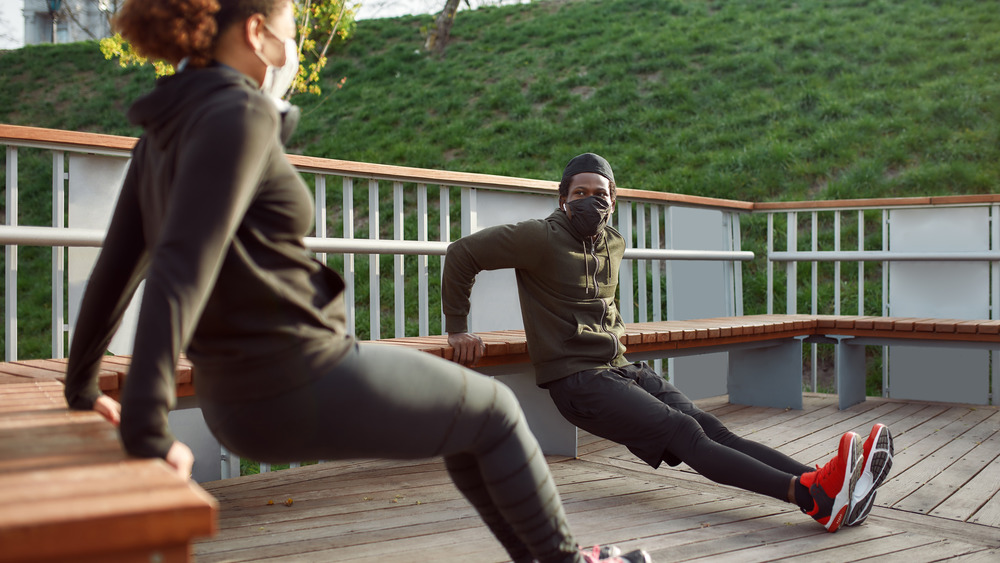When Should You Start Working Out Again After Having COVID-19?
If you've had COVID-19, whether you had no symptoms, mild symptoms, or severe symptoms, returning to exercise is important for your long-term health — but it needs to be done slowly and safely. This can be difficult because, as experts are quick to note, there is no 'one size fits all' framework for returning to exercise after contracting coronavirus (via the Hospital for Special Surgery). Here's what you need to know in order to decide what working out should look like for you after COVID-19.
If you're otherwise in good health, once symptoms have subsided for seven days, you can start exercising at 50 percent of your usual frequency and intensity. Slowly progress from there, but watch for warning signs and any difficulty breathing. You may find that you're more sore or fatigued than you would have been doing the same workout pre-COVID-19, and that's normal (via Today).
However, if you had a pre-existing heart or lung condition or a severe case of COVID-19, it's critical to only begin exercising again after a doctor has cleared you.
Don't plan to stay sedentary on the couch for long
The World Health Organization (WHO) lists a return to exercise as an important factor in your recovery process, since it can help boost your overall fitness, improve your mood and energy, and even reduce breathlessness. The WHO recommends doing at least 20 to 30 minutes of exercise five days per week, whether you're marching in place indoors because you're self-isolating, or heading outside for a brisk walk if you're cleared to be in public again. The WHO suggests moderate exercise, where you can speak a sentence but are moderately breathless during your workout.
Once you're experiencing zero symptoms, you can exercise, but pay attention to signs from your body. Experts are quick to point out that exercise isn't just a hobby — it's necessary for a healthy life. "Exercise is medicine," sports medicine physician Daniel Montero told the Mayo Clinic. "Exercise may even help you feel better by opening up your nasal passages, for instance. But you may want to reduce the intensity and length of your workout, and limit group activities [after COVID-19]."
It's also critical to pay attention to warning signs from your body: If you feel nauseous, dizzy, severely short of breath, clammy, tight in your chest, or in pain, the WHO recommends stopping your exercise and contacting your health care provider immediately.
Once you're back to your typical exercise routine, continue paying close attention to how you're feeling and don't be afraid to take rest days anytime you're feeling fatigued for between three to six months after having COVID-19, a group of doctors noted in the HSS Journal in a joint statement.


